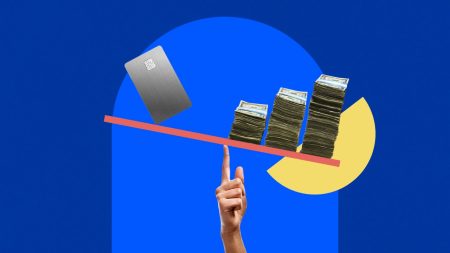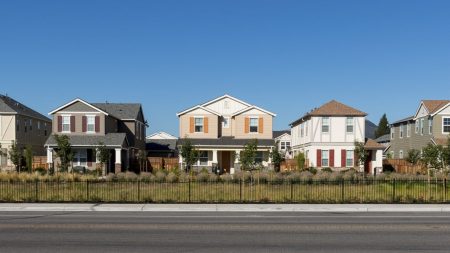Key takeaways
- A subprime mortgage might be an option for a borrower with a low credit score who can’t qualify for a conventional mortgage.
- Subprime mortgages tend to carry higher interest rates and often more onerous down payment requirements than conventional loans.
- There are laws in place to protect subprime borrowers from many of the risks they faced prior to the Great Recession.
What is a subprime mortgage?
Subprime mortgages — also known as non-prime or non-qualified mortgages — are for borrowers with lower credit scores, typically below 600, that prevent them from being approved for conventional loans. Subprime mortgages tend to have less favorable terms than conventional loans, such as higher interest rates and down payment requirements.
How do subprime mortgages work?
Subprime mortgages are similar to conventional mortgages in many respects. You’ll apply for a mortgage, supplying proof of income via bank statements, W-2s and tax returns, and answer any additional questions the lender may have during the underwriting process. If you’re approved, you’ll receive funding, close on your home and then pay back the loan according to the terms set by your lender.
However, you’ll get a subprime mortgage from a lender that offers subprime loans. Your local bank or credit union may not offer them. And the loan you receive will have much different terms than if you qualified for a conventional loan.
Government protections for subprime borrowers
Subprime lending was one of the main drivers of the financial crisis that fueled the Great Recession. In the years leading up to the economic meltdown, lenders approved many subprime mortgages that borrowers were unable to pay back. In fact, more than 20 percent of all mortgages originated in 2006 were subprime, according to an analysis published by the Federal Reserve Bank of Chicago.
While subprime home loans still exist, they’re now regulated by the Consumer Financial Protection Bureau (CFPB), the agency created as part of the Dodd-Frank Wall Street Reform and Consumer Protection Act, which was enacted in response to the subprime crisis. For example, CFPB rules now require subprime lenders to:
- Clearly disclose the loan’s terms and fees. Borrowers must have access to the loans’ annual percentage rate (APR) and payment schedule, including whether it ever requires a lump-sum payment.
- Refrain from issuing loans with certain features, like negative amortization. This happens when loan payments don’t fully cover the loan’s interest. Subprime lenders are also prohibited from prepayment penalties.
- Verify that borrowers obtaining subprime mortgages underwent housing counseling. The counselor must be approved by the U.S. Department of Housing and Urban Development (HUD).
- Evaluate whether the borrower is capable of paying back the loan. This is also called the “ability-to-repay” provision.
“If you violate the ATR rule as a lender, you can potentially be sued or be subject to regulatory enforcement,” says Austin Kilgore, director of corporate communications at financial firm Achieve. “So lenders that operate in the non-qualified mortgage space have a strong incentive to make sure they are adequately evaluating borrowers much more than the subprime lenders of 15 to 20 years ago did.”
That “non-qualified mortgage” designation limits legal protections for lenders, as well, which has kept many from operating in the space. “Lenders aren’t making the same kinds of subprime loans that they did during the run-up to the Great Recession,” says Kilgore. “The biggest reason is regulatory issues.”
Subprime vs. prime mortgages
Both subprime and prime mortgages serve the same purpose: provide funds for a home purchase. However, they have different terms and serve different borrowers.
Subprime vs. prime mortgage requirements
| Credit score | Down payment | Interest rate | |
|---|---|---|---|
| Prime mortgage requirements | 700+ | As low as 3% | 6-7% |
| Subprime mortgage requirements | > 600 | As much as 25%-35% | 10% or higher |
Prime mortgages are available to highly qualified borrowers who pose little risk to lenders. When lenders advertise rates “as low as” a certain percentage, those rates are typically reserved for borrowers who qualify for prime mortgages. These borrowers may also qualify to make down payments as low as 3 percent or 5 percent of the home’s price.
The interest rates on subprime mortgages, on the other hand, can be much higher — often more than 10 percent. Lenders typically ask for a larger down payment, as well, such as 25 percent to 35 percent, to avoid loaning a large sum to a riskier borrower.
Subprime vs. prime mortgage example
Subprime lenders tend to charge borrowers more in order to account for their risk. Here’s how much those higher costs could add up over the course of a 30-year mortgage:
| Prime | Subprime | |
|---|---|---|
| Home price | $400,000 | $400,000 |
| Down payment | $12,000 (3%) | $100,000 (25%) |
| Interest rate | 7% | 10% |
| Loan term | 30 years | 30 years |
| Monthly payment | $2,581 | $2,632 |
| Interest total | $541,295 | $647,777 |
Types of subprime mortgages
Some of the types of subprime mortgages you can get include:
Subprime fixed-rate mortgage
A subprime fixed-rate mortgage works just like a conventional fixed-rate mortgage in that the borrower gets a set interest rate, and the monthly payment remains the same for the entire loan repayment period.
Subprime fixed-rate mortgages sometimes have longer terms, such as 40 years, compared to the typical 15 or 30 years for a conventional fixed-rate loan.
Subprime adjustable-rate mortgage (ARM)
There are also subprime adjustable-rate mortgages, or ARMs, such as the 3/27 ARM, in which the borrower gets a fixed interest rate for the first three years, then the rate floats for the remaining 27 years.
The adjustments are based on the performance of a market index plus a margin. Most lenders have a cap on how much your rate can increase, but if you can’t make the peak monthly payment, you could be at risk of default.
Interest-only loan
With an interest-only loan, the borrower pays only interest during the first few years, typically seven or 10. This could mean smaller monthly payments at first, but you won’t be paying off principal or gaining equity.
Dignity mortgage
With a dignity mortgage, the borrower makes a down payment of at least 10 percent and takes on a high interest rate. If the borrower makes timely payments for a certain period — typically five years — the amount paid toward interest gets used to lower the loan balance, and the interest rate is lowered to the prime rate, or the rate that most large banks charge the most creditworthy borrowers. This rate is largely determined by the federal funds rate set by the Federal Reserve. This type of mortgage could be beneficial if you can afford to make larger payments during the beginning of your term.
Pros and cons of subprime lending
When considering a subprime mortgage, consider its pros and cons, including:
Pros of a subprime mortgage
- Aids borrowers with low credit: If your credit really needs work, a subprime mortgage might be your only option to get into a home.
- Flexibility: Unlike conventional loans, which are fairly cookie-cutter, subprime loans often have unique structures, such as an interest-only period, that might work in your favor in the short term.
Cons of a subprime mortgage
- Expensive: Compared to conventional loans, subprime mortgages have considerably higher interest rates, which increases your all-in costs. You’ll likely need to come up with a hefty down payment, as well — something that might not be possible if you’re working on improving your credit.
- Limited lender options: With a subprime mortgage, you’re not just limited in loan choice; you’ll also be limited in terms of lenders to compare.
Alternatives to a subprime mortgage
Other options you might want to consider besides a subprime home loan include:
- FHA loans: If your credit score is at least 580, consider an FHA loan with a down payment of 3.5 percent. If your credit score is between 500 and 579, you can qualify for an FHA loan with 10 percent down.
- VA loans: If you’re a veteran, active member of the armed forces or surviving spouse, look into VA loans. Guaranteed by the U.S. Department of Veterans Affairs, these loans require no down payment and could have lower credit score requirements.
- USDA loans: USDA loans are designed for low- to moderate-income borrowers in rural designated areas. Some qualifying locations are actually near large metro areas. Lenders might have relatively lenient credit standards that can help you qualify.
Another alternative is to simply wait. Continue paying your bills on time, and focus on taking steps to improve your credit. You might want to buy a house now, but you also don’t want to get stuck paying an overwhelmingly high interest rate.
Is a subprime mortgage right for me?
A nonprime mortgage isn’t ideal. You’ll pay more interest over the life of the loan, and you might have to come up with a hefty down payment. However, lending standards are relatively tight right now, making it harder even for buyers who may historically have qualified for a conventional loan. If a subprime loan is the only way you can become a homeowner, getting one might be worth the downsides.
You might consider a subprime loan if you:
- Can’t qualify for a conventional or government-backed loan. Any of these options would typically be less expensive, overall, than a subprime loan.
- Can afford a mortgage payment. Subprime mortgages are highly regulated, but they still carry the risk of default. You — and your lender — will want to ensure that your income is stable enough to repay your loan.
- Have a pressing reason to buy, rather than continuing to rent. If you can wait to take out a mortgage until after you’ve improved your credit, you’ll most likely get a better deal.
If you do choose a subprime loan, remember that consumer protections are more robust now than they were during the mid-2000s. You’ll still need to be mindful of your loan’s potential cost, but your lender must give you the tools you need to do the research.
FAQ
Read the full article here












